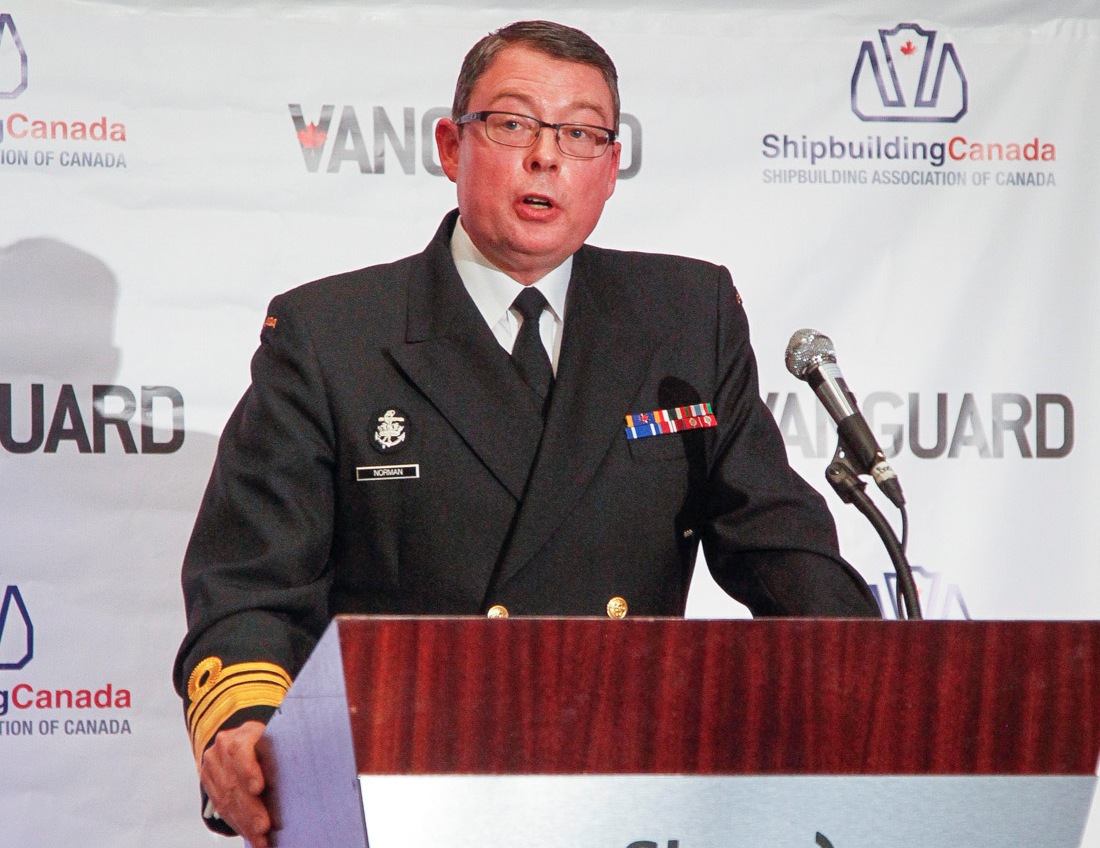When you haven’t built warships in decades and must wrestle with flat budgets and fewer human resources, yet face a growing demand to operate in more complex environments from the Arctic to contested littorals, how do you decide what ships to build and what capability to include in them? What tradeoffs should you be willing to accept?
Those were among the questions raised during the Shipbuilding Association of Canada’s (SAC) second shipbuilding forum. The event, held in partnership with Vanguard, drew around 150 people from across government, the Royal Canadian Navy, the United States Navy, the defence attaché community, and the defence and shipbuilding industries to an intimate setting in Ottawa last month.
Where the first forum, held in November, looked at advances in technology that are influencing modern shipbuilding, this follow-on event explored the cost-capability tradeoffs that are challenging most western navies as they grapple with declining budgets.
While the technology contained in a modern warship “is really quite phenomenal,” Cairns said, Canada needs to anticipate the long game. The recently decommissioned destroyers and auxiliary oiler replenishment ships served over 45 years, a testament to how well they were made and maintained, he said, but a tremendous challenge when it comes to deciding on the design and capability necessary for that long a lifespan.
“The question we have in our country is how do we decide what ship it is we want, what we are going to put in it, and whether we can afford it,” he asked. “We haven’t done the affordability part particularly well.”
Captain Mark Vandroff, program manager for the DDG 51 Arleigh Burke-class destroyers, has led some of the USN’s most successful acquisition programs. He said savings for total cost ownership of any fleet can only be achieved in small increments. Using a baseball analogy, he said there are “no home runs, only singles,” but those singles can amount to significant savings if well managed.
Building modularity and flexibility into the design from the outset were emphasized throughout. Vandroff shared the history of the DDG 51, which began as a 29-ship class and eventually grew into a 62-ship build. But after tacking in a different direction with the Zumwalt-class for five years, the USN has rethought the role of its surface combatants and come to the realization that the DDG 51 hull form is well suited for a future of wide area defence and integrated air and ballistic missile defence. The lesson, he said: “Before you decide what you want to build for a ship, decide what you want that ship to do.”
Vice-Admiral Mark Norman, commander of the RCN, closed the forum with a lengthy question and answer session. He acknowledged Canada’s lack of experience building ships – though he noted there is no shortage of opinions about shipbuilding – and commended the organizers for initiating the dialogue. “In practical terms, we learn through the experiences of others,” he said.
With the success of this second shipbuilding forum, plans are already underway for a third. Among the points of discussion throughout the day were the possibilities for innovation and greater efficiency through in-service support, which could well become the next topic for debate.
In lieu of a gift to speakers, Vanguard donated $500 to the Royal Canadian Naval Benevolent Fund.
